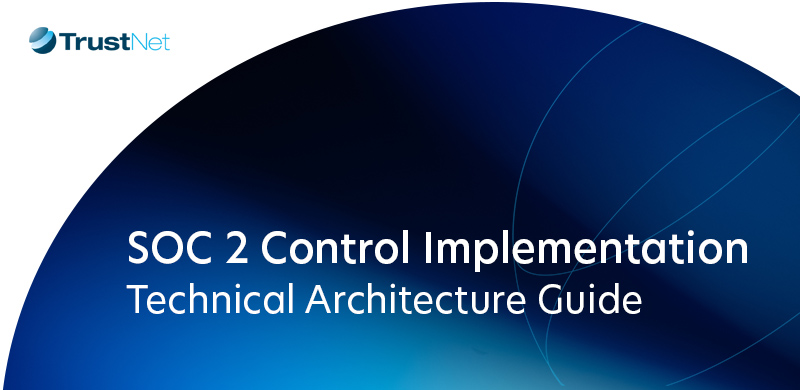PA DSS vs PCI DSS: Understanding the Differences and Their Impact on Your Business

Ensuring the security and integrity of payment systems is critical for businesses of all sizes that engage in digital transactions. Two standards, the Payment Application Data Security Standard (PA-DSS) and the Payment Card Industry Data Security Standard (PCI DSS), serve as cornerstones in the payment security architecture.
While both aim to protect sensitive payment card information from breaches and fraud, they cater to different aspects of the payment processing ecosystem. This article delves into the distinctions between these two standards and their significant impact on businesses, guiding you through the essential steps to ensure compliance and secure your payment environments.
PA DSS and PCI DSS Explained
Understanding the nuances between PA DSS and PCI DSS is not just a matter of regulatory compliance; it is crucial for maintaining customer trust, safeguarding your business’s reputation, and navigating the complexities of the modern payment landscape.
PA DSS (Payment Application Data Security Standard)
Focus: PA DSS is specifically designed for software developers and vendors who create applications that store, process, or transmit cardholder data. Its main goal is to ensure that these payment applications adhere to robust security standards to mitigate the risk of data breaches and fraud.
Key Points:
- Targets third-party payment applications involved in authorization or settlement processes.
- Emphasizes the development of secure payment applications by outlining specific security requirements.
- Global applicability to all payment applications that handle cardholder data.
This standard plays a crucial role in the payment ecosystem by ensuring the security integrity of software applications dealing with payment transactions.
PCI DSS (Payment Card Industry Data Security Standard)
Scope: Unlike PA DSS, PCI DSS applies broadly to any entity that stores, processes, or transmits cardholder data. This includes merchants, service providers, payment processors, and more. It is a comprehensive framework for protecting cardholder data across various transaction environments.
Key Points:
- Encompasses a wide range of entities involved in payment card processing.
- Comprises 12 main requirements covering network security, data protection, access control, and regular monitoring, among others.
- Aims to minimize credit card fraud by ensuring all involved parties maintain a high level of security.
PCI DSS is fundamental to the overall security of the payment card industry, offering a holistic approach to safeguarding payment transactions and cardholder data against unauthorized access and fraud.
Both PA DSS and PCI DSS are essential to maintaining the integrity and security of the payment processing ecosystem. Together, they form a comprehensive defense against threats to payment security.
For more on our payment security services Click Here
Key Differences Between PA DSS and PCI DSS
While PA DSS and PCI DSS are critical to enhancing payment security, they differ significantly in their requirements, applicability, compliance processes, and validation methods.
Variations in Requirements and Applicability
PA DSS is specifically designed for software vendors and developers of payment applications. Its primary focus is ensuring these applications do not store prohibited data, such as full magnetic stripe, CVV2, or PIN data, and maintain a secure environment for processing and transmitting cardholder data.
PCI DSS, on the other hand, has a broader application. It applies to all entities that process, store, or transmit cardholder data, including merchants, processors, acquirers, issuers, and service providers. The standard encompasses a wide range of security measures to protect cardholder data.
Distinctions in Compliance Processes and Validation Methods
For PA DSS compliance, vendors must have their applications assessed by a Payment Application Qualified Security Assessor (PA-QSA). The assessment ensures that the payment application complies with the PA DSS requirements, focusing on secure development practices and the protection of cardholder data within the application.
PCI DSS compliance involves a more varied process depending on the size and nature of the entity. It may include self-assessment questionnaires (SAQs), and on-site audits by a Qualified Security Assessor (QSA). The goal is to ensure that all aspects of the entity’s operations affecting cardholder data security adhere to the PCI DSS standards.
Impact on Your Business
The impact of PA DSS and PCI DSS on your business can be profound and multifaceted, affecting everything from financial health to brand reputation.
Non-compliance can lead to several adverse outcomes, including:
— Financial Penalties: Fines for non-compliance can be substantial, potentially costing businesses thousands to millions of dollars, depending on the size of the breach and the duration of non-compliance.
— Increased Risk of Security Breaches: Without adherence to these standards, businesses are more vulnerable to data breaches. The costs associated with breaches extend beyond initial financial loss, encompassing legal fees, forensic investigations, and remediation efforts.
— Reputational Damage: Trust is hard to earn and easy to lose. A single data breach can damage a company’s reputation, causing a loss of customers and decreased sales.
— Operational Disruptions: Following a breach, businesses may face operational disruptions or even temporary closure as they work to secure their systems and meet compliance requirements.
On the other hand, compliance with PA DSS and PCI DSS offers numerous benefits, such as:
— Reduced Risk of Data Breaches: Implementing the robust security measures required by these standards significantly lowers the risk of a data breach, protecting both customer data and your business’s financial and reputational well-being.
— Enhanced Customer Trust: Demonstrating compliance can significantly boost customer confidence in your business. Knowing their data is protected makes customers more likely to remain loyal and recommend your services to others.
— Avoidance of Fines and Penalties: By maintaining compliance, businesses can avoid the fines and penalties associated with non-compliance, freeing up resources for other areas of growth and development.
— Competitive Advantage: In today’s market, demonstrating a commitment to security can set your business apart. Compliance is not just about avoiding negatives but actively building a positive brand image.
Compliance Strategies
Organizations should adopt a structured approach to align with PA DSS and PCI DSS. Here are some of the best practices:
Regular Updates and Patch Management: Ensure that all systems are regularly updated. This includes installing security patches promptly to mitigate vulnerabilities.
Secure Software Development: For software developers, adhering to PA-DSS involves developing applications that protect cardholder data. Implement secure coding practices and perform code reviews to identify security flaws early in the development lifecycle.
Risk Assessment and Management: Conducting regular risk assessments helps in identifying potential vulnerabilities within the cardholder data environment. This proactive approach allows for timely remediation of identified risks.
Access Control Measures:
- Limit access to cardholder data to only those individuals who need it to perform their job functions and keep access level on a minimal level
- Implement strong authentication measures to ensure only authorized personnel can access sensitive systems and data.
- Protect cardholder data during transmission over open, public networks and when stored using strong encryption. This prevents unauthorized access to data in transit and at rest.
Building on the foundation of best practices, implementing specific security measures is vital for maintaining compliance:
Network Security Control (NSC): Install and maintain controls to protect cardholder data. Ensure they are configured to deny all traffic from untrusted networks and hosts, except for protocols necessary for the cardholder data environment.
Anti-Malware Measures: Deploy anti-malware software on all systems, ensuring it’s regularly updated. Utilize anti-malware strategies to protect against current and emerging threats.
Data Encryption and Masking: Use encryption techniques for data transmission and consider masking PAN (Primary Account Number) when displayed, ensuring that no more than the first six and the last four digits are visible.
Monitoring and Testing: Regularly test security systems and processes. Monitoring and testing include performing vulnerability scans and penetration testing to identify and remedy security weaknesses.
Incident Response Plan: Develop, maintain, and regularly test an incident response plan to be prepared for a data breach or security incident. This plan should include roles and responsibilities, communication strategies, and steps for containment and remediation.
Integrating these best practices and security measures into your organizational policies and procedures can enhance compliance with PA DSS and PCI DSS.
Navigating the Path to Secure Payment Processing
By adhering to PA DSS and PCI DSS standards, businesses protect sensitive cardholder information and build trust with their customers and stakeholders. Implementing the best practices and effective security measures outlined in this article is a step towards fostering a secure payment processing environment.
For businesses seeking to deepen their understanding of PA DSS and PCI DSS compliance, you can contact our expert team at TrustNet today. We provide detailed insights, guidance, and services tailored to help you navigate the complexities of payment security standards.
By committing to the principles of PA DSS and PCI DSS, businesses can pave the way for a safer payment processing landscape, ultimately contributing to the overall security of the digital economy.
Talk to an Expert today.




